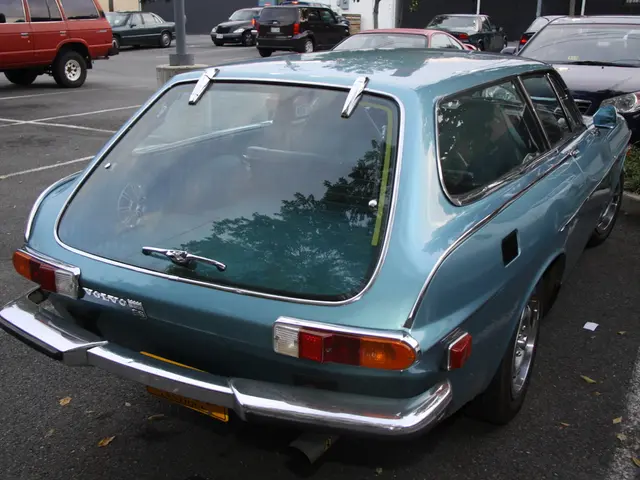U.S. Market Suitability of EREVs: Questionable or Optimal?
In the current landscape where federal support for electrics is being scaled back, extended-range electric vehicles (EREVs) could provide a viable solution to breathe new life into stranded investments in battery-electric vehicle (BEV) technology.
EREVs, which combine an electric drivetrain with a small internal combustion engine that acts as a generator to extend driving range, offer distinct advantages over both BEVs and plug-in hybrid electric vehicles (PHEVs). One of the key benefits of EREVs is their ability to offer longer driving ranges, effectively reducing range anxiety for long trips. Although the electric-only range is typically smaller, the onboard generator allows for extended travel without charging stops.
Advantages and Disadvantages of EREVs
Compared to BEVs and PHEVs, EREVs offer longer driving ranges, but they come at a higher upfront cost due to the complexity of adding an internal combustion engine and generator system. Maintenance costs may also increase because of engine servicing needs.
EREVs are less efficient than BEVs because the extra weight from the generator engine reduces pure electric range and overall energy efficiency. However, the combustion engine may run in a more efficient manner due to a simpler duty cycle, running in a limited rpm range and being quieter, cheaper, and more efficient due to higher compression ratio and EGR levels.
EREVs have seen limited adoption relative to BEVs and PHEVs, with fewer models available. Consumer interest may be lower due to complexity and maintenance concerns.
Comparing EREVs, BEVs, and PHEVs
| Aspect | EREVs | BEVs | PHEVs | |--------------|----------------------------------------------|--------------------------------------------|---------------------------------------------| | Range | Offer longer driving range than BEVs by using a small gasoline engine to recharge the battery on the go, effectively reducing range anxiety for long trips[3][2]. The electric-only range is usually smaller, but the onboard generator allows for extended travel without charging stops[3]. | Limited by battery capacity alone, ranges vary widely (e.g., 212 miles for Nissan Leaf, 405 miles for Tesla Model S)[2]. Range may be sufficient for daily use but requires planning and charging stops on long trips[1][2]. | Combine a battery-powered electric range (generally 20-40 miles) with a full gasoline engine that extends total range beyond pure electric limits, often exceeding BEV total range[4][5]. Good for both daily commutes and long trips[2][5]. | | Cost | Typically higher upfront cost than comparable BEVs and PHEVs due to complexity of adding an internal combustion engine and generator system[3]. Maintenance costs may increase because of engine servicing needs[3]. | Higher initial cost partly due to large expensive batteries, but lower maintenance (no combustion engine)[1][2]. Battery replacement can be costly over time[1]. | Usually less expensive than BEVs but more expensive than regular hybrids; PHEVs cost more than pure gas models but less than some BEVs[2][4][5]. Maintenance cost higher than BEVs due to dual drivetrains[4]. | | Efficiency | Less efficient than BEVs because the extra weight from the generator engine reduces pure electric range and overall energy efficiency[3]. The combustion engine may run inefficiently when used to recharge batteries, leading to higher fuel consumption compared to PHEVs or BEVs[3]. | Most efficient in terms of energy use, as no gasoline engine is carried or used[3]. Efficiency depends on battery technology and driving conditions[1]. | More efficient than conventional hybrids but less than BEVs; electric mode for short trips is efficient; gasoline engine provides range flexibility[4][5]. Complex dual drivetrain reduces some efficiency[4]. | | Consumer adoption | Limited adoption relative to BEVs and PHEVs; fewer models available (e.g., BMW i3 REx, Mazda MX-30 R-EV)[3]. Consumer interest may be lower due to complexity and maintenance concerns[3]. | Growing rapidly with improving range and falling battery costs; increasing public charging infrastructure supports adoption[1][2]. | Widely adopted as a practical compromise; appeals to those seeking electric driving benefits without range anxiety[2][4][5]. Charging infrastructure less critical for adoption due to gasoline backup[5]. |
The Future of EREVs
EREVs provide a reliable backup once battery capacity is depleted, reducing the need for frequent charging stops typical of BEVs. However, they carry the complexity and maintenance concerns of both an electric drivetrain and a small combustion engine, including potential engine damage from idling and fuel costs.
Automakers have invested tens of billions of dollars in BEV technology, and EREVs can make this investment productive again by using the same battery, motor, and inverter technology that BEVs do. EREVs are suitable for full-size pickup trucks and SUVs that carry heavy loads or tow heavy trailers due to their extended range and lack of problems associated with BEVs in cold weather and heavy loads.
Marketing efforts for EREVs will focus on the instant electric-motor torque, cost benefits, and potential for bidirectional charging. The success of EREVs depends on automakers producing sensational models that compel customers to buy them. With the marketing challenge of convincing ICE-loving pickup or SUV owners of the compelling reasons to switch to an EREV version, the future of EREVs remains to be seen.
One promising development is the upcoming launch of the Ramcharger EREV pickup truck, which offers 145 miles (233 km) of battery range and an additional 545 miles (877 km) with the range extender. If the cost of an EREV is similar to that of an ICE counterpart, it has a real shot of going mainstream. A slight premium could attract some customers, but if the cost is too high, it may not be successful.
EREVs are gaining popularity in the Chinese market, particularly in smaller cities and rural areas. With the success of EREVs in China, it is possible that they could become more widely adopted in other markets as well.
In summary, EREVs offer a practical long-range solution with a gasoline engine backup but at the cost of added complexity, weight, and maintenance. BEVs maximize efficiency and lower operating cost but face range and charging barriers. PHEVs provide a middle ground with moderate electric range and traditional fuel flexibility, influencing consumer choices based on priorities in range, cost, and convenience.
- The finance and industry sectors may find a renewed interest in extended-range electric vehicles (EREVs) as they seek viable solutions for stranded investments in battery-electric vehicle (BEV) technology, following federal support reduction.
- EREVs, a combination of electric drivetrain and a small internal combustion engine, offer longer driving ranges compared to BEVs, thus reducing range anxiety for transportation purposes, particularly during long trips.
- On the other hand, EREVs come with higher upfront costs due to their intricate structure, which includes an internal combustion engine and generator system, and potential increment in maintenance costs from engine servicing needs.
- The automotive technology and transportation industries have invested substantial sums in BEV technology. EREVs, using the same battery, motor, and inverter technology that BEVs employ, can help leverage these investments.
- With the upcoming launch of the Ramcharger EREV pickup truck, offering a significant electric range of 145 miles (233 km) and a further 545 miles (877 km) with the range extender, the affordability of EREVs could propel them towards mainstream adoption, provided the price is competitive with internal combustion engine (ICE) counterparts.




